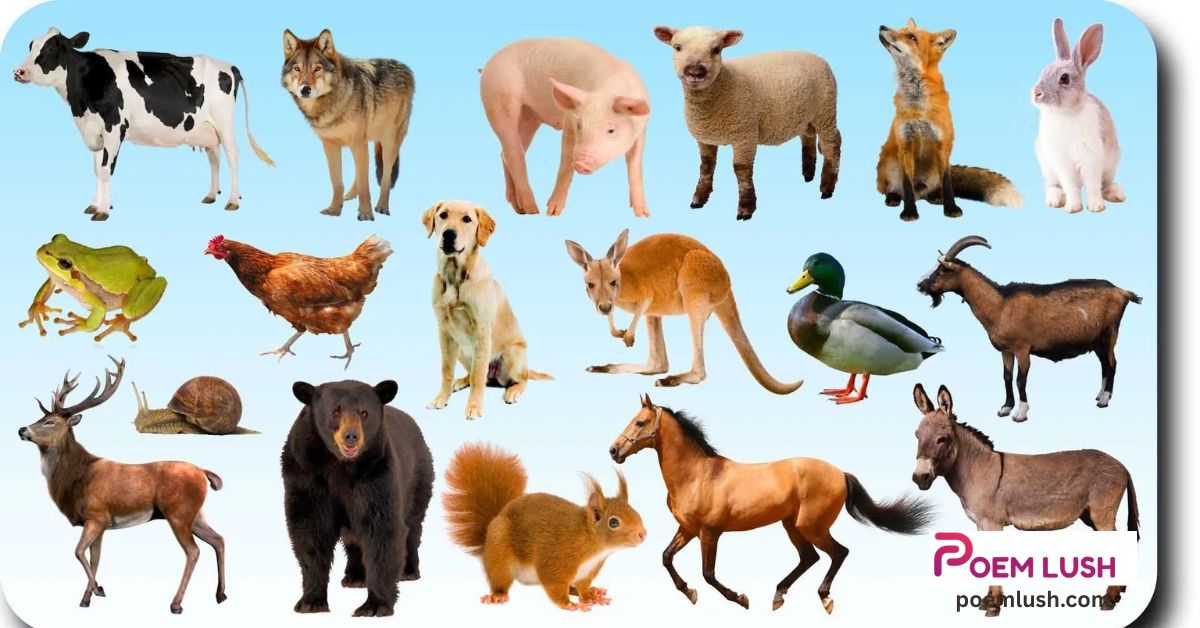Animal Baby Names Understanding the names of baby animals is more than just a fun fact it’s a window into the fascinating world of biology, animal behavior, and even language. Whether you’re a parent teaching your kids animal vocabulary, a language learner expanding your English skills, or just curious about nature, learning the names of animals and their babies adds a whole new dimension to appreciating wildlife. Animal Baby Names
Let’s dive into this comprehensive guide where we explore over 100 animals and their babies’ names in English, from farm animals to exotic jungle creatures.
Farm Animals and Their Babies
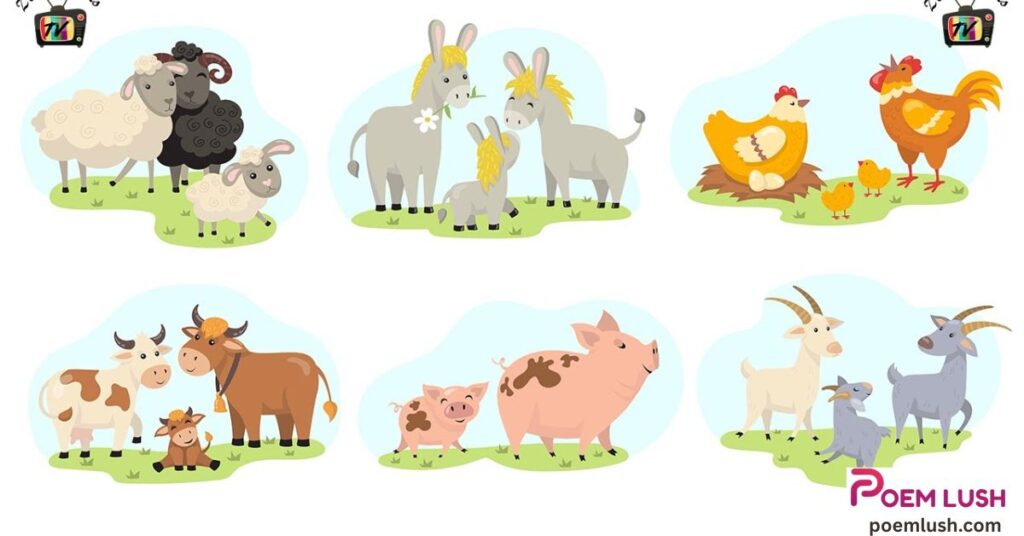
Camel and Calf
Camels, known as the “ships of the desert,” are iconic animals found in arid regions. A baby camel is called a calf. Calves are born with their eyes open and are able to walk within hours. These sturdy animals rely on their mothers’ milk for nutrition and gradually start eating vegetation after a few months. Animal Baby Names
Donkey and Foal
Donkeys are hardworking and loyal animals commonly used for transport and farming. Their babies are called foals. Donkey foals are playful and stick closely to their mothers. They usually nurse for 4 to 6 months before they start munching on grass and hay.
Mule and Foal
Mules are the offspring of a male donkey and a female horse. Though they are usually sterile, mule babies are also called foals. Just like donkey and horse foals, they are sturdy and intelligent but inherit their calm and strong temperament from both parents.
Buffalo and Calf
Buffaloes are powerful animals often seen on farms or in wetlands. A baby buffalo is called a calf. Calves stay close to their mothers, feeding on milk and gradually moving on to grass. They are typically weaned at around 6 months of age.
Bison and Calf
Similar in look but different from buffaloes, bison are mostly found in North America. A baby bison is also called a calf. These little ones are reddish-orange at birth and follow the herd closely for safety from predators. Animal Baby Names
Moose and Calf
Moose are the largest members of the deer family. Their babies, called calves, are born in spring and grow rapidly due to a rich milk diet. A moose calf can run just a few days after birth, which is essential to escape predators in the wild.
Wild Animals and Their Babies
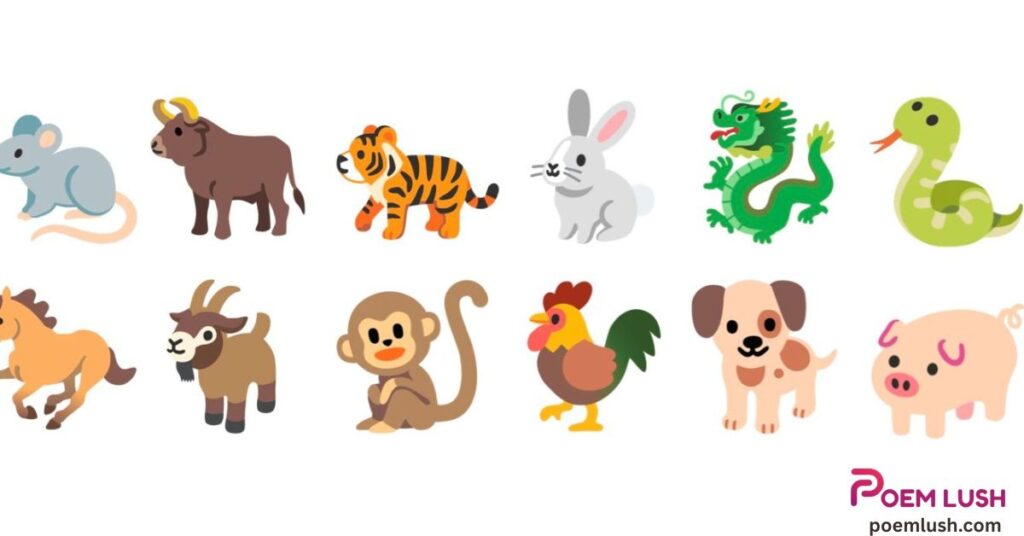
Leopard and Cub
Leopards are elusive and powerful big cats. A baby leopard is called a cub. Leopard cubs are born blind and stay hidden in dens for the first few weeks. Their mother fiercely protects them while teaching them essential survival skills.
Cheetah and Cub
Known for being the fastest land animal, the cheetah’s young ones are also called cubs. Cheetah cubs have a thick, greyish mane for camouflage and are extremely vulnerable to predators during their early weeks.
Gazelle and Fawn
Graceful and swift, gazelles are antelope species with fawns as their babies. These young ones are quick learners and must be up and running shortly after birth to evade danger.
Antelope and Calf
Antelope, similar to gazelles, have calves as babies. These animals live in herds, and calves stay hidden in tall grasses until they are strong enough to keep up.
Ibex and Kid
The ibex is a wild mountain goat known for climbing steep terrains. Its babies are called kids, and they’re born with an incredible ability to scale rocky landscapes just days after birth.
Reindeer and Calf
Reindeer, also known as caribou in North America, have calves that are born in herds during migration. Calves walk within an hour and keep pace with the group almost immediately.
Yak and Calf
Living in cold, high-altitude regions like the Himalayas, yaks are incredibly hardy animals. A baby yak is called a calf, and it’s covered in thick fur from birth to survive freezing temperatures. Animal Baby Names
Elk and Calf
Elks, another member of the deer family, also give birth to calves. These calves are born in summer and are well-camouflaged with spots to help them blend into the environment.
Birds and Their Chicks
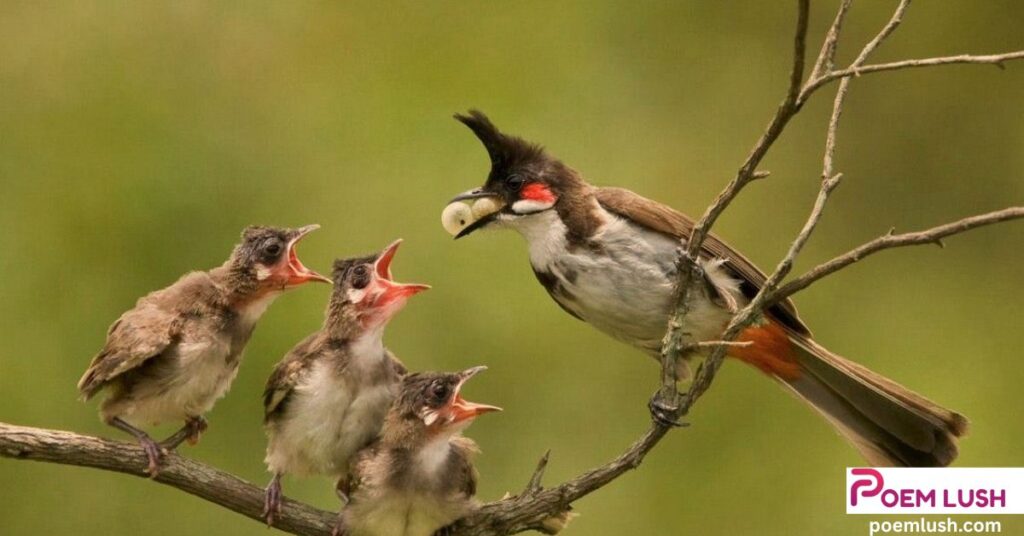
Peacock and Peachick
A baby peacock is called a peachick. While adult peacocks are known for their extravagant tail feathers, peachicks are modestly colored and remain close to their mother.
Eagle and Eaglet
Eaglets are the young of the mighty eagle. They are born helpless but grow rapidly, learning to fly at around 10 12 weeks of age under the careful watch of their parents.
Hawk and Eyas
A baby hawk is called an eyas. These chicks are raised in high nests and spend several weeks growing strong enough to hunt and fly.
Owl and Owlet
Owlets, or baby owls, are known for their oversized heads and wide eyes. They remain in the nest for several weeks, learning from their parents before venturing into the night.
Turkey and Poult
A baby turkey is called a poult. Poults are very social and stick close to their mother. They are excellent foragers and learn to search for food from a young age.
Partridge and Cheeper
The partridge lays eggs on the ground, and its baby, known as a cheeper, follows its parents closely, learning to blend into the environment to stay safe. Animal Baby Names
Mammals and Their Young
Lemur and Infant
Found in Madagascar, lemurs are primates with infants that cling to their mother’s belly or back. These babies are incredibly dependent in their first few months.
Chimpanzee and Infant
Like humans, baby chimpanzees are called infants. They stay with their mothers for years, learning everything from foraging to social behavior through play and observation.
Squirrel and Kit
A baby squirrel is called a kit. Kits are born blind and furless in nests and are fiercely protected by their mothers.
Hedgehog and Hoglet
Hoglets are baby hedgehogs. Despite being born with soft spines, they harden within hours. These little creatures are weaned in about four to six weeks.
Porcupine and Porcupette
The porcupette, or baby porcupine, is born with soft quills that harden soon after birth. They’re active and curious from a young age.
Beaver and Kit
Beavers give birth to kits, which are excellent swimmers within days. They live in lodges built by their parents and help maintain the dam structure.
Armadillo and Pup
Pups are the young of armadillos. Born with soft armor, they grow tougher plates as they age.
Sloth and Pup
Slow-moving sloths have pups that cling to their mother’s fur for months as they slowly explore the canopy.
Hyena and Cub
A hyena cub is part of a strict matriarchal society. Cubs are born with teeth and quickly learn to be assertive.
Meerkat and Pup
Born underground, meerkat pups stay in burrows for their first few weeks. Older members of the group help care for them.
Mongoose and Pup
A mongoose pup is curious and energetic. They’re raised communally, with many adults helping feed and protect the young.
Badger and Cub
Badgers give birth to cubs, which stay hidden in extensive underground burrows called setts.
Weasel and Kit
Weasels produce kits, small but fierce hunters even at a young age.
Raccoon and Kit
Kits, the babies of raccoons, are playful and intelligent, often mimicking the behavior of adults.
Opossum and Joey
Joeys are baby opossums, born extremely small and crawling into their mother’s pouch to nurse and grow.
Ferret and Kit
Ferrets give birth to kits, playful and curious from the start, making them popular pets in many households.
Additional Animal Baby Names
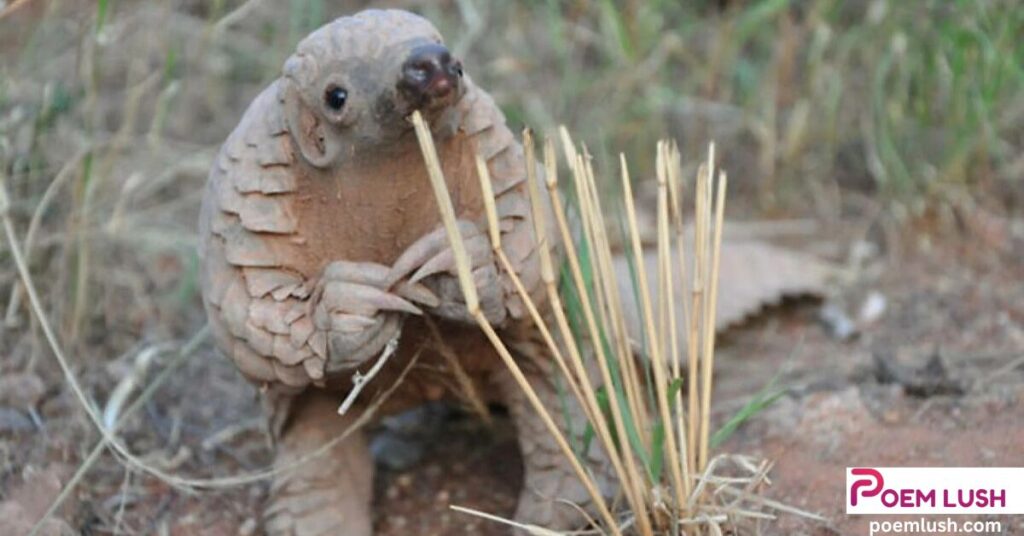
Gibbon and Infant
Gibbon infants cling to their mothers as they swing through the trees of Southeast Asia.
Jaguar and Cub
A jaguar cub is powerful from a young age, learning to stalk and swim under the watch of its mother.
Bobcat and Kitten
Kittens of the bobcat are elusive and raised in dens, hidden from predators.
Lynx and Kitten
Lynx kittens are fluffy and well-camouflaged to blend into snowy or forested environments.
Llama and Cria
Crias are baby llamas. They’re up and walking within an hour and are highly social animals.
Alpaca and Cria
Like llamas, alpacas have crias that are gentle and quickly adapt to life in herds.
Conclusion
Learning the names of animals and their babies isn’t just for kids it’s a valuable part of understanding nature, language, and science. From the mighty leopard and its cub to the tiny squirrel and its kit, each pairing tells a story about growth, survival, and connection. This knowledge also enhances vocabulary for language learners and


